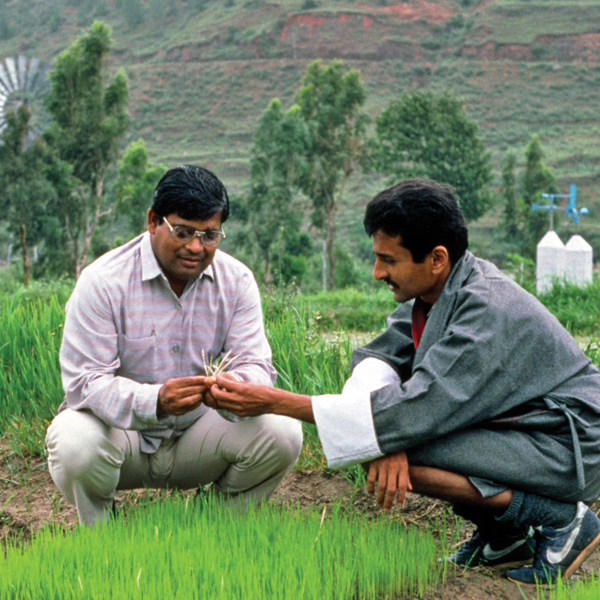Elizabeth Powley, Director of Grants Management, discusses a new guide that aims to ease the pressure on project support grant applicants and shares the role of grantee feedback in improving how we work.
What if applying for a grant felt less like a high-stakes final exam and more like an invitation to a conversation? This is the question that animated us as we developed a new guide to project grant applications.
Grant Applications: Time-intensive and Pressure-filled
We work to create respectful, reciprocal relationships with applicants and grantees. So when we heard that our application was complex and even opaque, we took it to heart. In recent years, we have sought to improve our processes and our relationships.
To make it easier for the people doing the work, for example, we removed the time-intensive narrative application requirements for general operating support grants. But our application for project support grants, in which we and the applicant must agree on a specific scope of work, is relatively traditional.
The project support application asks for information and documentation about an applicant organization’s structure, governance, financial health, capacity, as well as the proposed project goals, activities, timeline, and expected outcomes.
This is a significant investment of time for any applicant, especially for smaller, younger, and frontline organizations.
We recognize this is a significant investment of time for any applicant, especially for smaller, younger, and frontline organizations. Our grantees made us aware, through their candid feedback, that our application uses technical language and jargon that can be intimidating and confusing. They told us that some of the language we use was unintentionally exclusionary.
We can simplify and clarify what we need to ensure organizations spend less time applying for funding and more time on their work.
Increasing Transparency
We recognize that applying for funding will always carry inherent pressure; organizations need crucial dollars to fund their missions. While we may never be able to completely eliminate this power imbalance, we can commit to making our thinking and decision-making more transparent.
We designed the new guide as an optional resource to aid applicants when they move through the proposal process. As with some of our other efforts to be more transparent in our grant process, our hope is to make explicit both our approach and our rationale. We want the experience to be as frictionless as possible for applicants.
We recognize that applying for funding will always carry inherent pressure; organizations need crucial dollars to fund their missions.
In developing this guide, we interrogated our application process by asking ourselves these questions: “What are we asking for? Why are we asking for it? And how will we use it?” The guide makes this explicit for each section of the application.
For example, under “description of funded activities” we ask applicants to describe a project’s goals and the activities it proposes to undertake with Foundation funds. We ask this to get a comprehensive picture of the planned work. We use this information to determine how the proposed work aligns with our grantmaking strategy. We also use this section of the application to look for additional ways we might champion the applicant’s work beyond funding, such as networking and thought partnership opportunities.
Fundamentally, we aim to be in relationship with applicants and grantees. An invitation to apply for funding is an invitation to a conversation, an opportunity for us to better understand applicants, their work, and their goals. We hope this guide opens more avenues for candid dialogue.
The Value of Feedback
In developing the application guide, we gathered anonymous feedback from organizations we fund in a series of focus groups with an external moderator. These discussions were wide-ranging and covered the application process and broader aspects of the grantee-funder relationship.
The insights from those conversations helped us develop this practical guide, which informed why we ask certain questions and how we review the responses.
The insights from those conversations helped us develop this practical guide, which informed why we ask certain questions and how we review the responses. And grantees pointed the way to other improvements to our processes they would like to see. We were gratified to learn that in many cases, these suggestions are aligned with improvements already under way at the Foundation, such as a reconsideration of our reporting requirements, that we anticipate will lead to additional changes.
In the meantime, we hope this guide succeeds in demystifying the application process. Our work should not be cloaked in mystery. We want applicants to understand how we operate and to be empowered in their relationships with us. Our mutual success depends on it.




